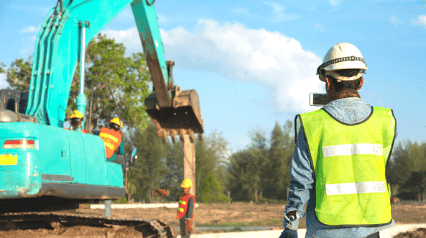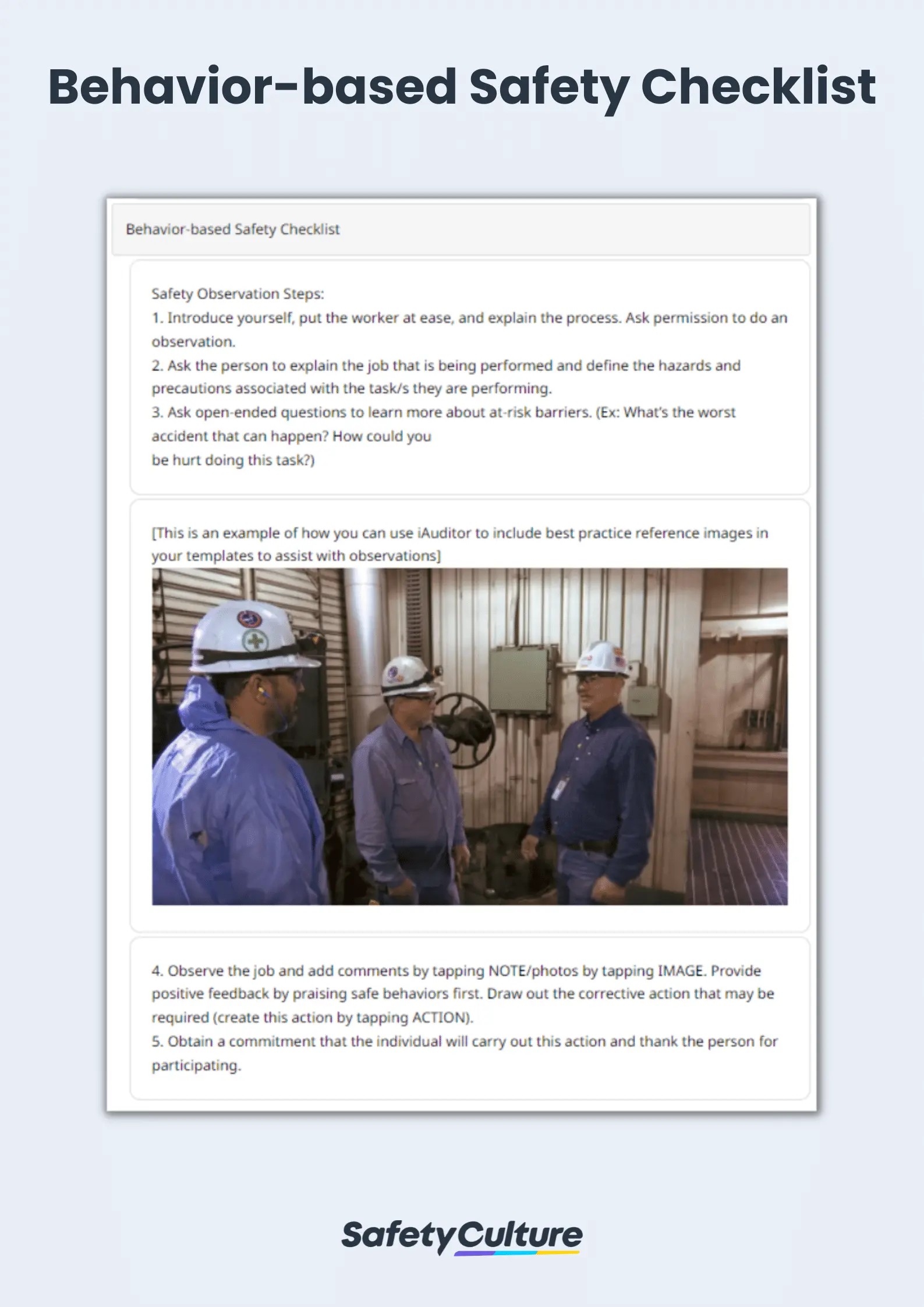What is a Behavior-based Safety Checklist?
A behavior-based safety checklist, or behavioral safety checklist, is used by safety managers to systematically apply positive reinforcement of safe acts in the workplace. Utilizing digital behavioral based safety checklists can help organizations eliminate root causes of at-risk behavior and inspire employees to be self-accountable.
How to Create a Behavior-based Safety Checklist
It is important to have a behavior-based safety checklist in place to help ensure the safety of both employees and customers. To create a behavior-based safety checklist that is just right for your business, consider the following:
- What is the purpose of the checklist?
- What behavior do you want to target?
- Who will be using the checklist?
- How often will the checklist be used?
- What format will the checklist be in?
The purpose of the checklist is to identify behaviors that could result in an injury or accident, while the behavior that is targeted will depend on the industry and type of business. For example, in a manufacturing setting, unsafe behaviors might include not wearing proper protective equipment or not following safety procedures.
In a retail setting, unsafe behaviors might include not cleaning up spills or not properly securing merchandise.
In some cases, the checklist will be used by supervisors to conduct observations of employees or by employees themselves to self-monitor their own behavior. Ultimately, the frequency of use will depend on the business—some use them on a daily basis, while others use them weekly or monthly.
These checklists can be paper-based or in digital form. There are also a variety of mobile apps that businesses can use to create and manage their behavior-based safety checklists.
What to Include in a Behavior-based Safety Checklist?
Since it differs based on its main use, here are a few general items that a behavior-based safety checklist should have:
- Site name
- Location
- Name of the observer
- Date of audit
- Aspects that need to be observed (e.g., PPE, equipment, operations, loading/unloading procedures, etc.)
- Areas for improvement
- Additional comments/recommendations
- Completion (full name and signatures of authorized people)
Benefits of Using One
A behavior-based safety checklist can provide many benefits for both individuals and organizations. For individuals, it can help identify potential hazards in their work environment and address them before they result in unforeseen incidents. Organizations, meanwhile, can improve safety performance by promoting safe behavior and improving communication between employees and management.
Behavior-based safety checklists can also help achieve compliance with safety regulations. By creating a clear and concise way to identify potential hazards, they can provide employees with a better understanding of their role in preventing accidents and injuries.
FAQs About Behavior-based Safety Checklist
By following the tips below, you can ensure that your behavior-based safety checklist is used effectively and efficiently:
- Make sure everyone understands the purpose of the checklist and how it should be used.
- Use the checklist regularly, especially when new hazards are present.
- Be sure to involve employees in creating and updating the checklist.
- Use the checklist as a guide for safety observations and audits.
- Keep track of changes and progress over time by regularly reviewing the checklist.



